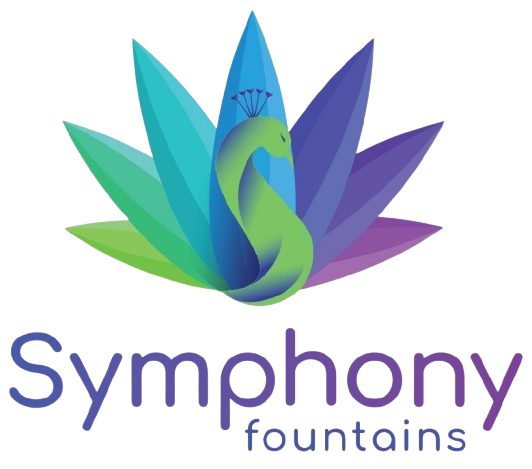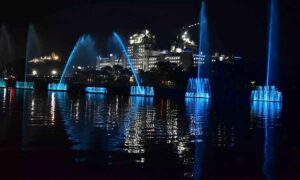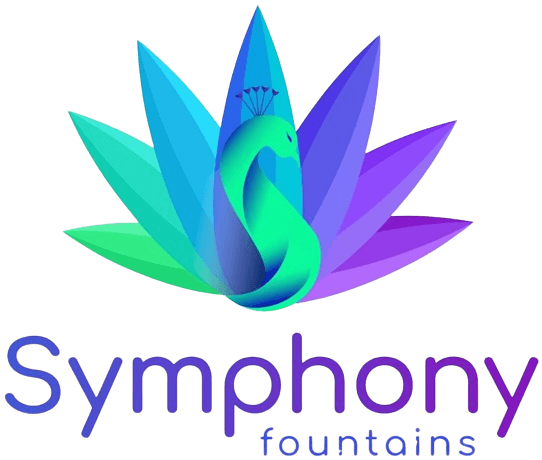Knowledge Center Blogs
Introduction: The Importance of Energy Efficiency in Fountain Design
Fountains are visually stunning elements in public spaces, but they can also be energy-intensive. If not designed properly, fountains can consume excessive power, increasing operational costs. At Symphony Fountains, we specialize in creating fountains that not only enhance the aesthetics of a space but also incorporate energy-saving features. With over 15 years of experience, we understand how essential energy efficiency is in fountain design to reduce costs and promote sustainability.
In this article, we’ll discuss essential energy-saving strategies for fountain design, from choosing the right pumps and lighting systems to incorporating renewable energy sources like solar power.
- Energy-Efficient Fountain Design
When designing a fountain, it’s important to balance aesthetics with energy efficiency. Well-planned systems can reduce energy usage while maintaining the fountain’s visual impact.
Key Considerations:
- Water Circulation: The flow of water in a fountain should be efficient to reduce the workload on pumps. Efficient water circulation systems minimize the energy needed for operation.
- Low-Energy Pumps: Selecting pumps that are appropriately sized for the fountain helps ensure optimal energy use. These pumps are designed to run efficiently, using less power while still maintaining a strong water flow.
- LED Lighting: Traditional fountain lighting can consume a lot of electricity. Using LED lighting significantly lowers energy consumption and extends the life of your fountain’s lighting system.
Summary:
Efficient water circulation, low-energy pumps, and LED lighting are the foundation of energy-efficient fountain design.
- Eco-Friendly Fountain Design
Sustainability is becoming a priority in fountain design. Incorporating eco-friendly materials and practices ensures that fountains have a minimal environmental footprint.
Sustainable Features to Incorporate:
- Solar-Powered Fountains: Solar-powered fountains harness renewable energy, reducing reliance on the electrical grid and lowering energy costs.
- Water Conservation: Closed-loop systems recycle water, preventing waste and minimizing water consumption while still creating beautiful displays.
- Eco-Friendly Materials: Choosing durable, sustainable materials for the fountain ensures long-term durability and reduces environmental impact.
Summary:
Solar power, water conservation, and eco-friendly materials are key to creating a sustainable fountain that benefits both the environment and your budget.

- Optimizing Water Flow to Reduce Power Consumption
Water flow is central to the fountain’s performance. Managing water flow efficiently helps reduce energy consumption without compromising the fountain’s appearance or performance.
Solutions for Optimization:
- Efficient Pumping Systems: The pump’s design should match the size and type of fountain. A pump that is too powerful can waste energy, while one that is underpowered may not create the desired effect.
- Automation: Automated systems that adjust the flow based on performance schedules and environmental conditions can help minimize power consumption.
- Water Jet Optimization: In musical fountains, optimizing water jets ensures that energy use is directly proportional to the intensity of the display.
Summary:
Efficient pump selection, automation, and optimization of water jets are crucial to maintaining an energy-efficient fountain.
- Lighting Solutions for Energy Efficiency
Lighting is one of the most energy-consuming components of fountain design. However, newer technologies allow for energy-efficient solutions that maintain vibrant displays.
Energy-Saving Lighting Strategies:
- LED Lights: LEDs are much more energy-efficient than traditional bulbs and have a longer lifespan, reducing both electricity costs and maintenance.
- Smart Lighting: Smart lighting systems automatically adjust based on time of day or performance schedules, ensuring that lights are only on when needed.
- Synchronization with Water Displays: In musical fountains, using synchronized LED lighting that adjusts to the music reduces the need for excessive lighting.
Summary:
Switching to LED lights and using smart systems can significantly cut down on energy use while enhancing visual effects.
- Reducing Environmental Impact in Fountain Projects
A fountain’s design should focus on reducing its environmental impact. By implementing green technologies and energy-saving features, you can ensure that the fountain operates in an eco-friendly manner.
Key Design Principles:
- Green Technology: Incorporate renewable energy sources, energy-efficient pumps, and eco-friendly filtration systems to reduce the ecological footprint.
- Efficient System Design: A well-designed fountain system prioritizes sustainability, ensuring that it runs efficiently while contributing to long-term environmental conservation.
- Energy Cost Reduction: By using efficient systems, you can lower operational costs and ensure the fountain’s sustainability.
Summary:
Green technologies and efficient design principles are vital in reducing a fountain’s energy consumption and environmental impact.

Conclusion: Symphony Fountains – Experts in Sustainable Fountain Design
At Symphony Fountains, we specialize in designing and installing energy-efficient, sustainable fountains that enhance public spaces while reducing environmental impact. With over 15 years of experience, we understand the importance of blending aesthetics with energy efficiency. Our products include solar-powered fountains, low-energy pumps, and LED lighting systems that contribute to a greener future. We are now expanding to cities across Africa, including Lagos, Cairo, Nairobi, and more, offering customized fountain solutions to meet the needs of every project.








